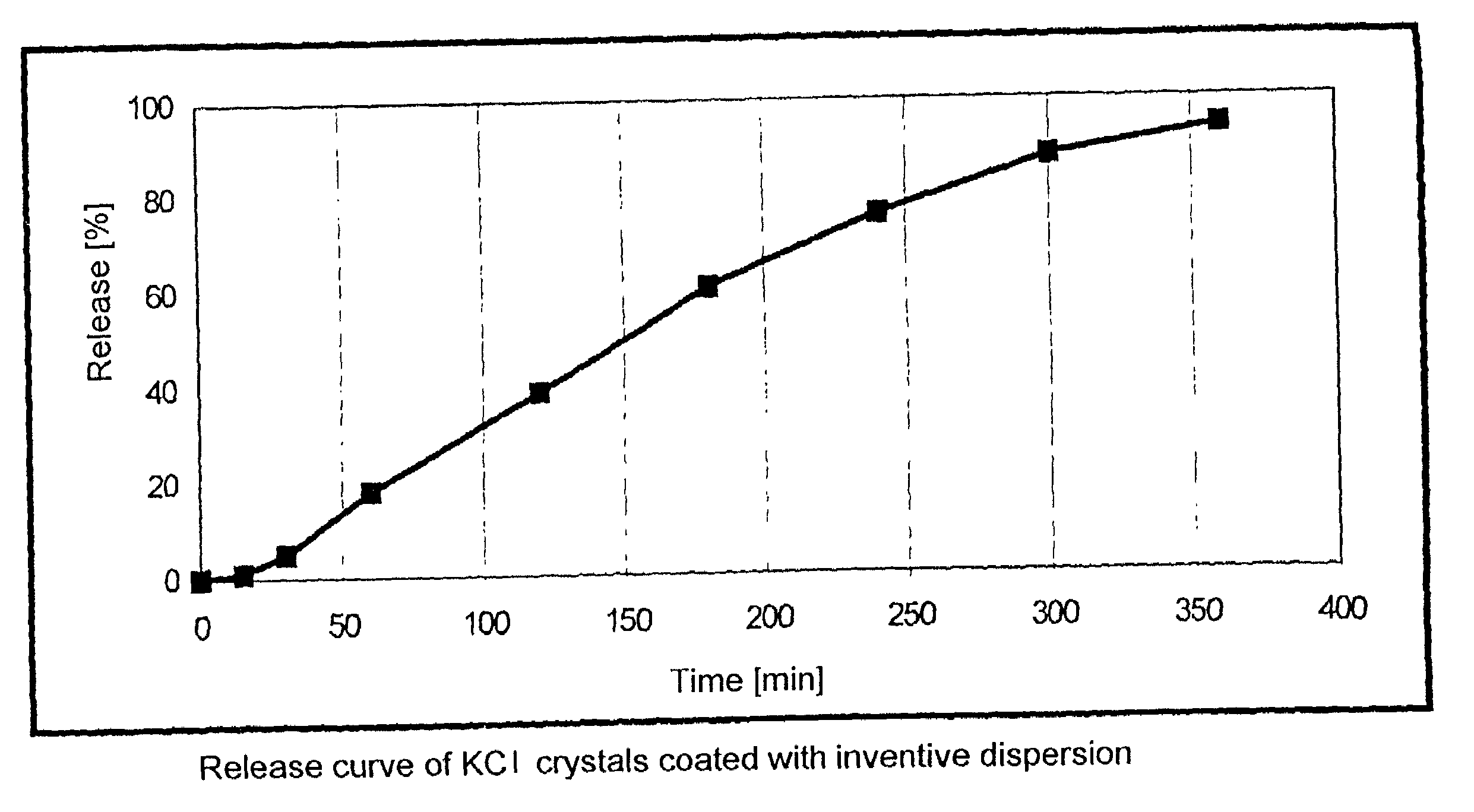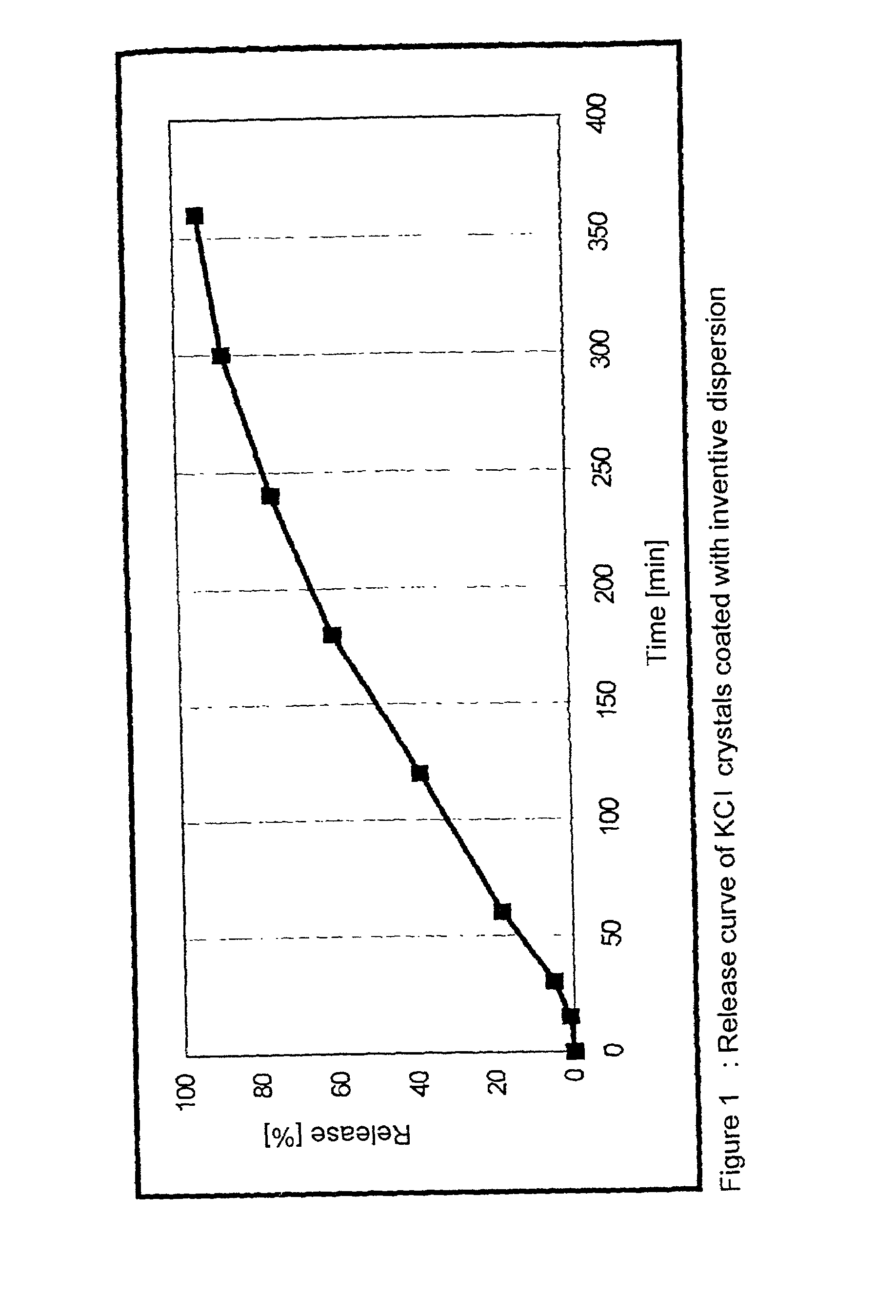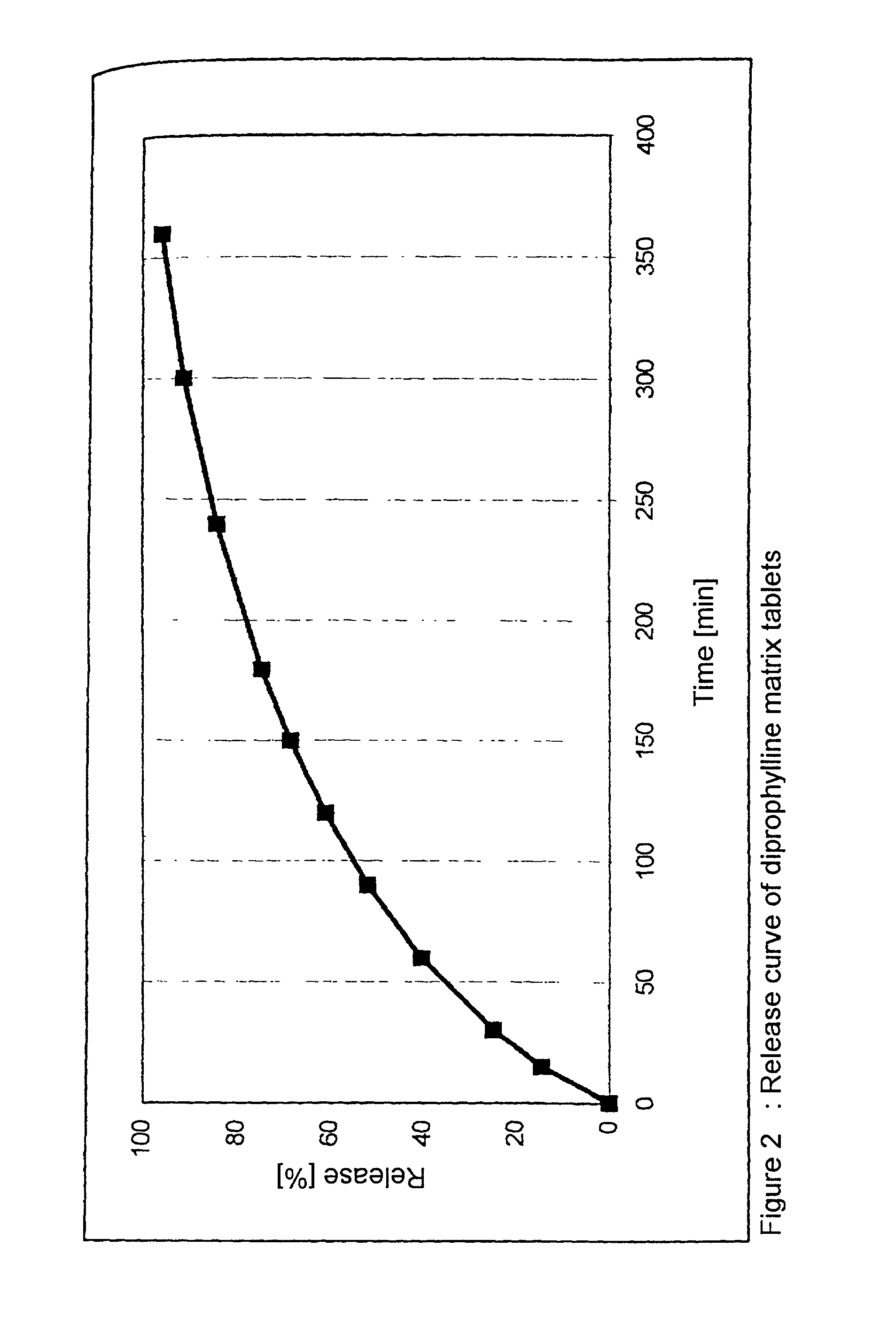Dispersion comprising a non-ionic emulsifier
a technology of emulsifier and emulsifier, which is applied in the direction of pill delivery, pharmaceutical non-active ingredients, organic non-active ingredients, etc., can solve the problems of inconsistency in the release of clenbuterol active substances, limited selection of appropriate emulsifiers, etc., and achieve the effect of reducing the quality of medicaments
- Summary
- Abstract
- Description
- Claims
- Application Information
AI Technical Summary
Benefits of technology
Problems solved by technology
Method used
Image
Examples
examples
[0060]Solids content: 1 g of dispersion is dried in an oven at 110° C. for 3 hours in accordance with Pharm. Eur. 2.2.32 method d.
[0061]pH: Determined in accordance with Pharm. Eur. Method 2.2.3.
[0062]Dynamic viscosity: determined using a Brookfield viscometer (UL adapter / 30 min−1 / 20° C.)
[0063]Particle size: determined from dilute dispersion using a Nanosizer (Coulter).
[0064]Coagulum fraction: 100 g of dispersion are passed through a precision-weighed sieve with a mesh size of 0.09 mm (mesh number 90, ISO) and washed through with purified water until the runnings are clear. Sieve and residue are dried to constant weight at 105° C. and weighed precisely. The weight difference is calculated as a % of the amount of dispersion investigated.
Crystallization of the Emulsifier:
[0065]About 0.3 g of dispersion is placed on a slide and dried at <10° C. for at least 12 h. The crystallization of the emulsifier in the dried film is subsequently examined under a polymerizatio...
PUM
| Property | Measurement | Unit |
|---|---|---|
| glass transition temperature Tg | aaaaa | aaaaa |
| glass transition temperature Tg | aaaaa | aaaaa |
| glass transition temperature Tg | aaaaa | aaaaa |
Abstract
Description
Claims
Application Information
 Login to View More
Login to View More - R&D
- Intellectual Property
- Life Sciences
- Materials
- Tech Scout
- Unparalleled Data Quality
- Higher Quality Content
- 60% Fewer Hallucinations
Browse by: Latest US Patents, China's latest patents, Technical Efficacy Thesaurus, Application Domain, Technology Topic, Popular Technical Reports.
© 2025 PatSnap. All rights reserved.Legal|Privacy policy|Modern Slavery Act Transparency Statement|Sitemap|About US| Contact US: help@patsnap.com



